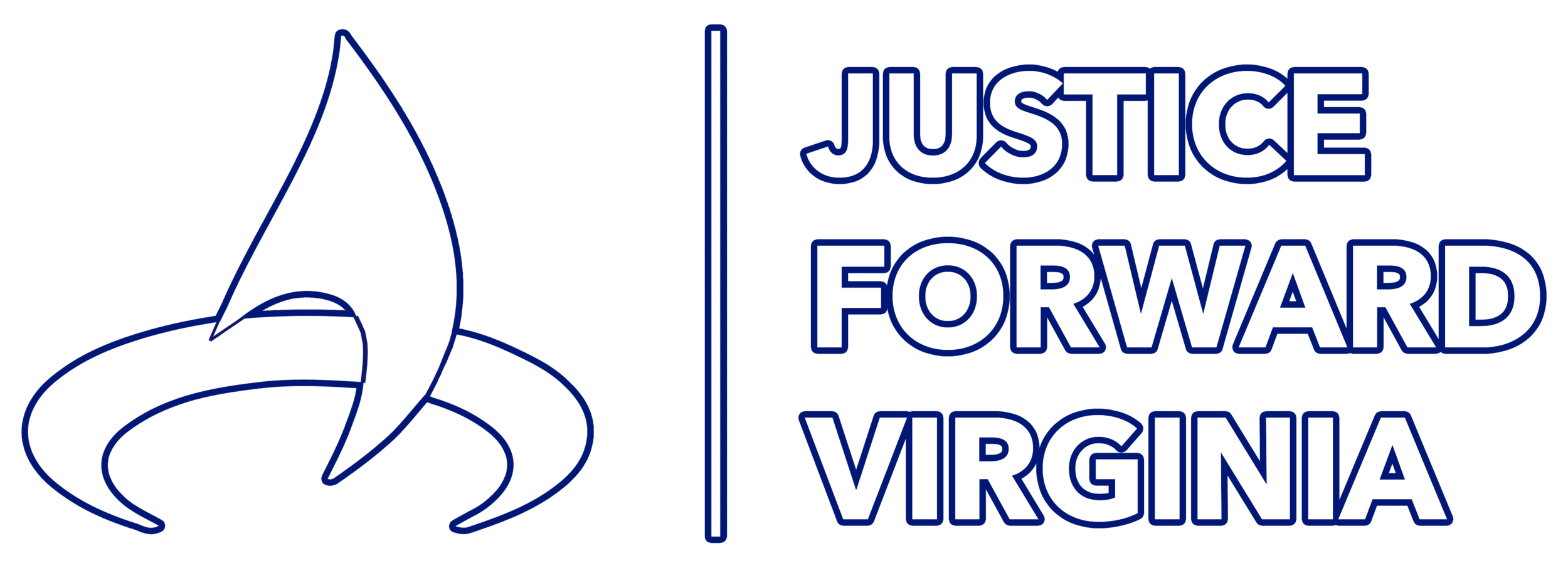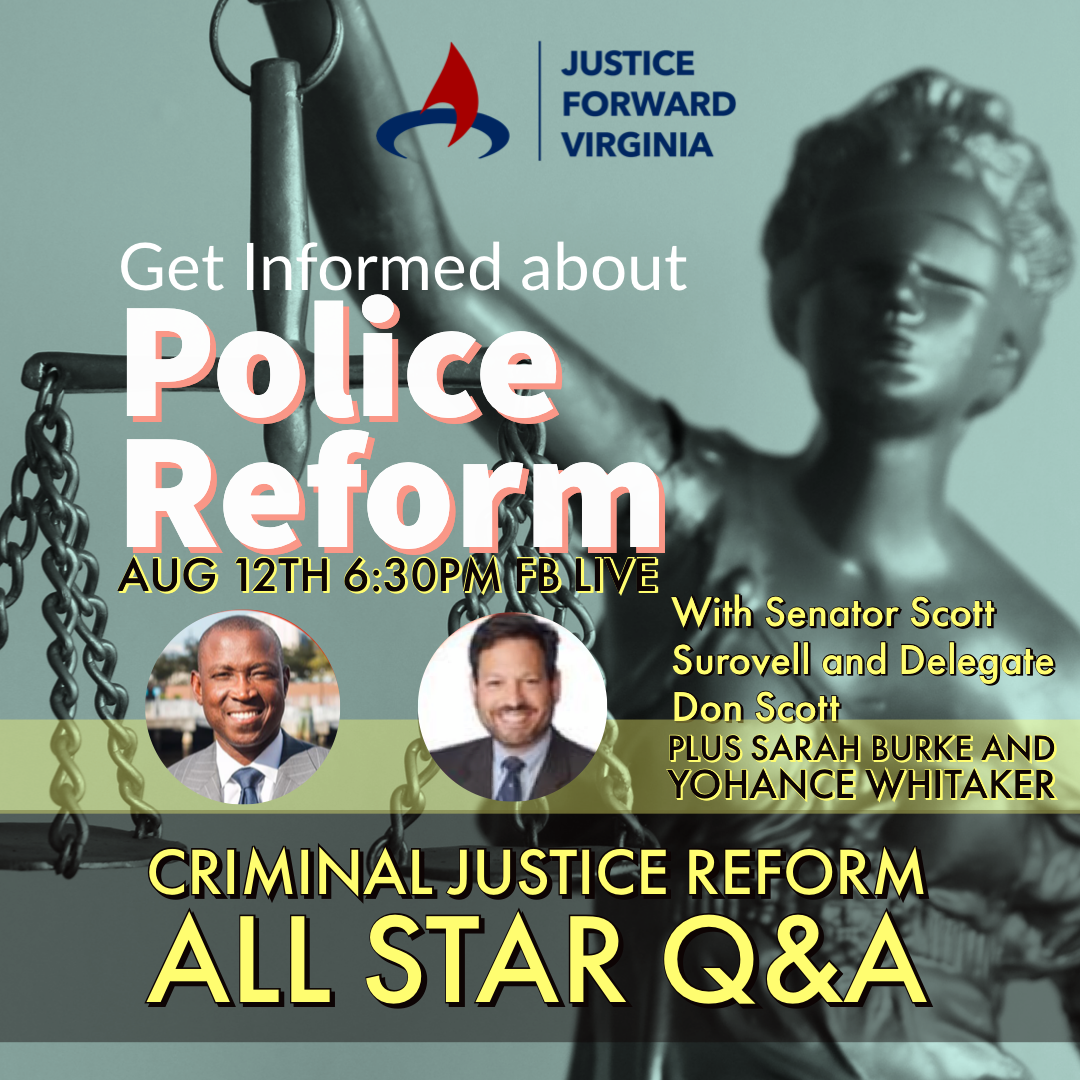Do Police in Schools Really Make Our Kids Safer?
In Virginia, like many counties, cities, and states across the U.S., there is a demand to take immediate steps to address the disparate impact of policing and incarceration on people of color. Disparate treatment and subsequent impact on people of color is not limited to our communities, it is also pervasive in our schools. One of the leading causes of this is the increased presence of police officers in our schools, commonly referred to as “school resource officers.”
Do not let the term mislead you. A “school resource officer” is a “certified law-enforcement officer hired by a local law enforcement agency to provide law-enforcement and security services to Virginia public elementary and secondary schools.” Va. Code §9.1-101. Importantly, this means they are generally not employees of the school or school district, nor supervised by its administration. Instead, they are employed by and ultimately answer to the local police department. Think of them as police officers simply switching a shift or to a different precinct. Sometimes, it is that easy. In fact, until this past legislative session, there were no explicitly mandated, youth-focused training requirements for police officers being placed in Virginia schools.[1]
How prevalent are police officers in our schools? According to the 2018 Virginia Department of Criminal Justice Services’ School Safety Audit (which contained data through the 2017-18 school year) there were approximately 764 individual police officers placed in Virginia schools, covering 1,079 Virginia public schools, which is approximately 55% of all Virginia schools.[2] The number of police officers in schools has nearly doubled since 2000.[3]
The most common reason for this increase is safety. We want to believe our children are safe when we send them to school. The oft-cited example for the need for police presence in schools is in the event of a school shooting. Between 2009 and 2019, there were 180 shootings at a school leading to the deaths of 356 people.[4] However, there is no empirical data to support the notion that having a police officer present in a school limits or prevents school shootings. A separate study found only two occasions over the past 19 years where a school resource officer shot an active shooter.[5] Furthermore, among the more than 225 incidents on campuses since 1999, at least 40 percent of the affected schools had an officer assigned to the school.[6] One such recent example is Marjory Douglas Stoneman High School in Parkland, Florida. That school had on-campus police at the time of its high-profile shooting, but that officer now stands criminally charged for alleged inaction as the shooting occurred.[7]
Unfortunately, because of the tragic nature of these shootings, determining whether police presence in schools actually make our children safer is often unchallenged. The data suggests something more troubling, which is that the presence of police in schools leads to the overcriminalization of youthful behavior. Arrest rates for low level offenses substantially increase when police are assigned to schools.[8] The Advancement Project studied this issue and noted alarming data when it came to students of color. While Black and Brown students only made up 40% of the school-age population, they accounted for 58% of school arrests.[9] The most striking data related to Black girls, who made up 17% of the school population, but made up 43% of the students arrested or referred to law enforcement for prosecution. One such startling example came from Orlando, Florida, where a 6-year old girl was arrested and handcuffed after throwing a “tantrum” in school and kicking a school staff member.[10] She was actually the second 6-year old that officer had arrested that day.[11] And while this seems extreme, a survey of juvenile arrests in the state of Florida found that a child as young as 4 years old was arrested and charged.[12] This funneling of children from the school system to the criminal legal system is often referred to as the “school-to-prison pipeline.”
But does this pipeline exist here in Virginia? Unfortunately, it does. Virginia schools in a single year (2011-2012) referred students to law enforcement agencies at a rate nearly three times the national average: about 16 for every 1,000 students, compared to a national rate of six referrals for every 1,000 students. This ratio was higher than any other state in the country. Even more alarming, some of the schools in Virginia with highest rates of referral — in one case 228 per 1,000 — were middle schools, whose students are usually from 11 to 14 years old.[13]
The numbers regarding arrests and the overcriminalization of our youth alone are startling—but then comes the violence associated with these arrests. We live in an age of social media and technology. Just as there are recordings of police violence against people of color, there are a number of documented incidents of Black children being brutalized and arrested by police in schools. One example involved Shakara from Columbia, South Carolina. Shakara, a sixteen year-old Black girl, was violently grabbed in a headlock by the white police officer assigned to her school.[14] She was then tossed on the ground by the officer and pinned down as she was handcuffed. Why did the officer use such violence against her? Because Shakara refused to hand over her cell phone to the officer and leave the classroom. She and another student who recorded the incident were actually initially charged with criminal conduct, before public outrage sparked dismissal of the charges. Unfortunately, there are many more incidents of this type of overt police violence in schools, so many that organizations like the Advancement Project now maintain databases of police assaults in schools.[15]
The overreliance of policing in schools has led to victimization and violence against our children, predominantly Black children, and has ultimately led to children being less safe. The elimination of police in schools is one important step in the fight to divest our schools from failed law enforcement strategies such as “zero tolerance” and the “war on drugs,” decriminalize student behavior, and end the school-to-prison pipeline.
[1] https://lis.virginia.gov/cgi-bin/legp604.exe?201+sum+SB171&201+sum+SB171
[2] https://www.justice4all.org/2020/06/05/sro-va-law/
[3] https://www.justice4all.org/wp-content/uploads/2016/01/School-Policing-Report-Full.pdf
[4] https://www.cnn.com/interactive/2019/07/us/ten-years-of-school-shootings-trnd/
[5] https://www.washingtonpost.com/graphics/2018/local/school-shootings-and-campus-safety-industry/
[6] Id.
[7] https://www.nytimes.com/2019/06/04/us/parkland-scot-peterson.html
[8] Advancement Project, https://wecametolearn.com/
[9] Id.
[10] https://www.nytimes.com/2020/02/27/us/orlando-6-year-old-arrested.html
[11] Id.
[12] https://www.sun-sentinel.com/news/florida/fl-children-arrested-in-florida-20160122-story.html
[13] https://publicintegrity.org/education/virginia-tops-nation-in-sending-students-to-cops-courts-where-does-your-state-rank/
[14] https://www.youtube.com/watch?v=qBSrccdaqXo
[15] https://wecametolearn.com/
The article was written by Brad Lindsay.


